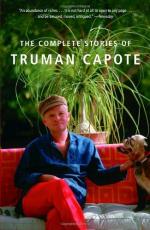|
This section contains 9,089 words (approx. 31 pages at 300 words per page) |

|
SOURCE: “The Dark Stories,” in The Worlds of Truman Capote, Stein and Day, 1970, pp. 16–39.
In the following essay, Nance examines the defining characteristics of Capote's early short stories.
The early fiction of Truman Capote is dominated by fear. It descends into a subconscious ruled by the darker archetypes, a childhood haunted by bogeymen, a world of blurred realities whose inhabitants are trapped in unendurable isolation. The stories set in this dark world include “A Tree of Night” (1943), “Miriam” (1944), “The Headless Hawk” (1946), “Shut a Final Door” (1947), and “Master Misery” (1948) (S).1 Deep below the surface they are really one story, and they have one protagonist. This story will be continued, and its hero will achieve a peculiar liberation in Capote's first novel, Other Voices, Other Rooms (1948). The fear and sense of captivity that overshadow these stories result from the individual's inability to accept and respond properly to reality. On the...
|
This section contains 9,089 words (approx. 31 pages at 300 words per page) |

|


